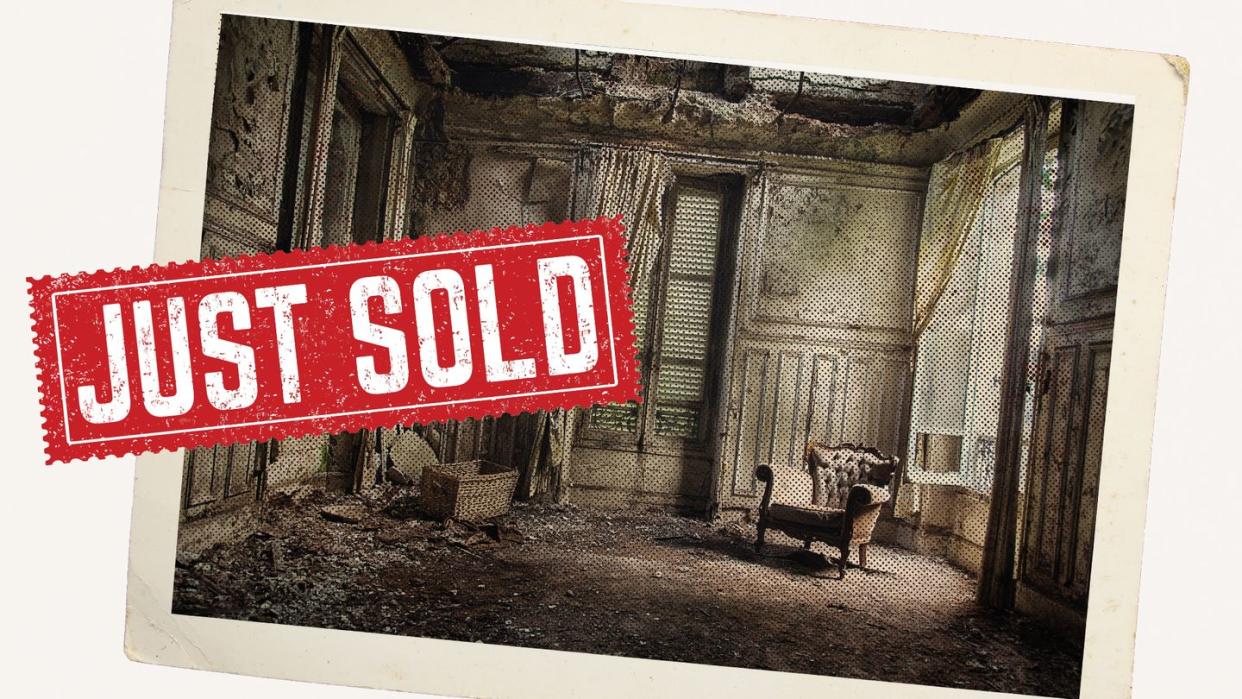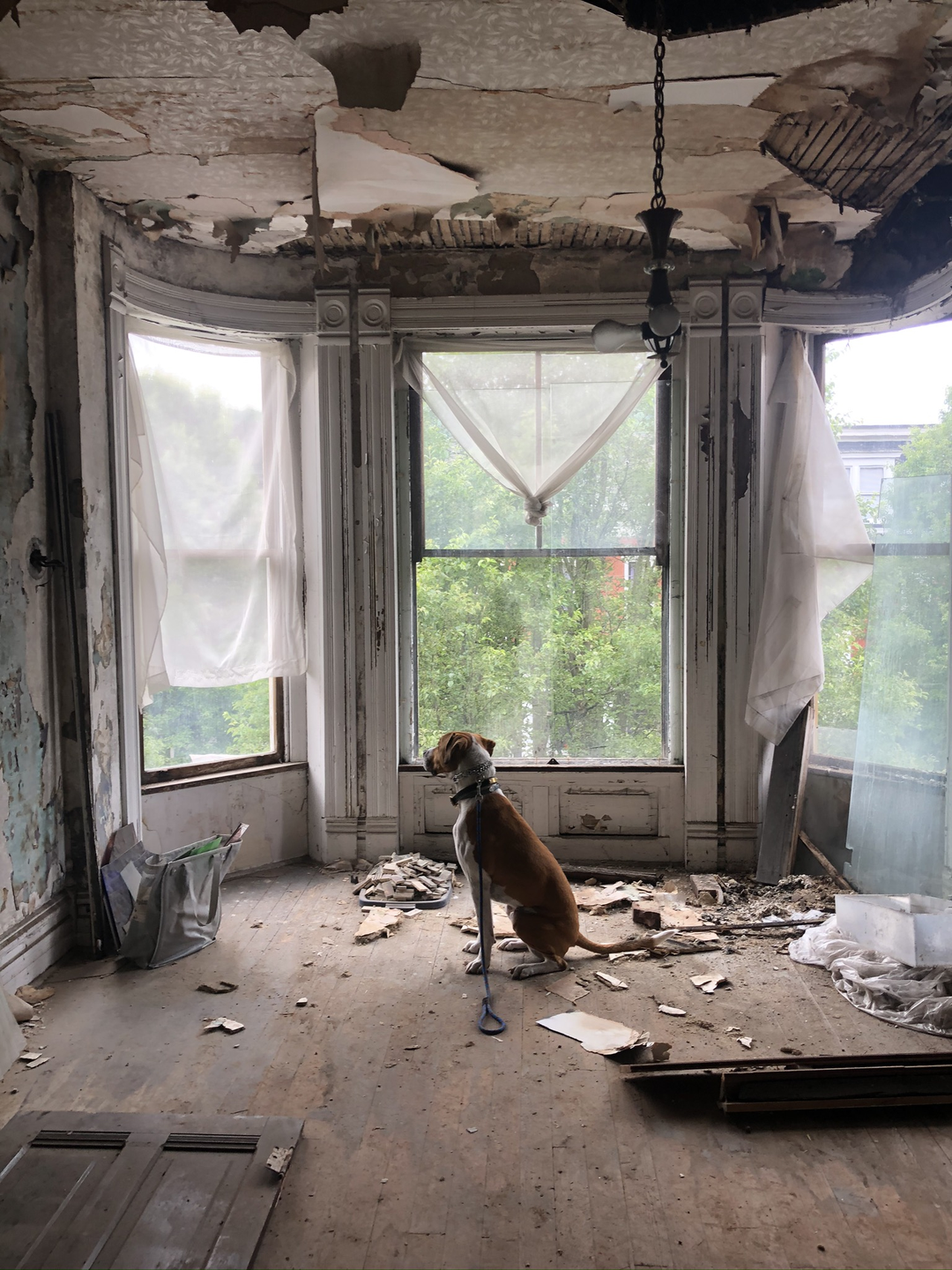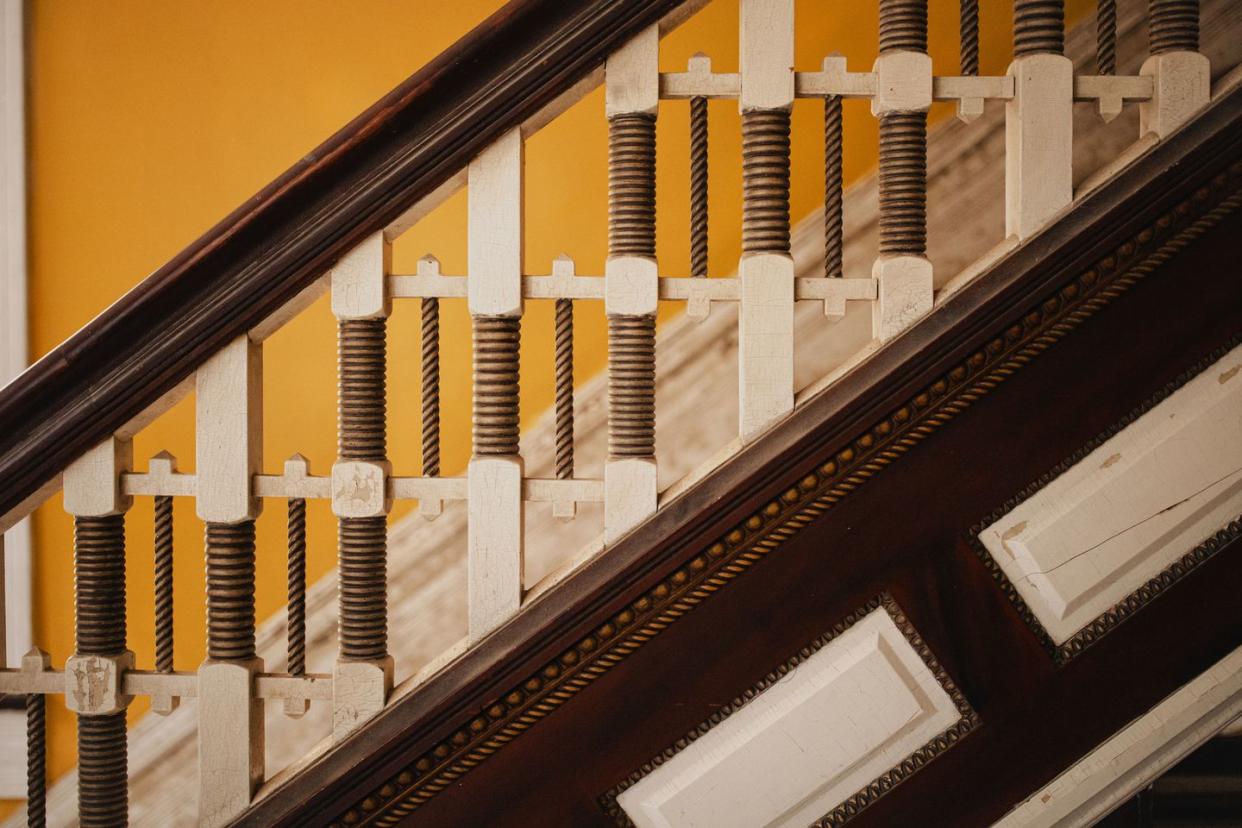Would You Buy a Condemned House?

"Hearst Magazines and Yahoo may earn commission or revenue on some items through these links."
[table-of-contents] stripped
If you're looking to buy a home, your prospects usually fall into one of three categories: new build, updated, and fixer-upper. But for some aggressive renovators, fixer-upper takes on an entirely new meaning. Abandoned, condemned, and dilapidated homes are being increasingly purchased across the country. Zillow trend expert Amanda Pendelton says that, on listings, the language to look out for is "fixer-upper," "needs work," "investment," and "TLC"—these words are a sign that the home won't be move-in ready and you're on the right track.
There are a number of reasons why buying a vacant home can work in your favor, whether you want to tear it down and build on the land or undertake a massive renovation. Approximately 10 percent of homes in the United States are vacant, and while this includes rentals, second homes, and vacation properties, a decent number of them—3.6 percent to be exact—are properties that are in a dilapidated state either due to the passing of the owner, condemnation, or neglect and that are looking to be sold "as-is," according to Hannah Jones, senior economic research analyst at Realtor.com.
With an "as-is" real estate purchase, "the buyer is knowingly inheriting all the issues a house may have, but likely getting a financial deal in exchange," says Jones. "In some cases 'as-is' may mean move-in ready but in need of an update, while in most others 'as-is' could mean the home is not ready to be lived in. While in other home purchase scenarios a seller may remedy issues based on the inspection, the 'as-is' tag suggests the seller will not take any action. However, the inspection could help justify a slightly lower price and is important information for the buyer to have."
Sure, an "as-is" home may initially look like a deal based on the listing price, but you have to factor in the sweat equity. How much time, effort, money, and energy are you willing to put into a home in that state? What are the benefits of buying an abandoned home? We break down three unique situations and outline how to find, finance, and buy an abandoned home. Read on to find out if it's the right process for you.
How to Find an Abandoned Property
If you're knee-deep in the home-buying process already, it's best to tell your broker that you're willing to look at less-than-livable properties. However, many of these homes aren't even on the market.
According to Jones's research, Midwestern metros have the largest share of homes sold as-is among U.S. regions. "In the first quarter of 2024, roughly 5.1 percent of homes listed in large Midwest metros (like St. Louis and Chicago) wear advertised sold 'as-is' compared to 4.2 percent in the Northeast, 3.3 percent in the South, and just 2.4 percent in the West," she explains.
Broaden Your Search
For content creator Jenna Phipps, who's based in Vancouver, Canada, the draw was the opportunity to restore and eventually live in a true midcentury modern home, a rare architectural style for the area she and her partner were looking in. "Luckily, I was able to see the potential right away," she explains. "But we had to have a real conversation about what condition we were willing to start with." Phipps's property was on the market, so she followed a traditional buying process, even having the home inspected prior to closing. "Honestly, we were expecting much worse," she says, laughing. "We thought this was a tear-down, given the water damage." Luckily, the exterior of the home was in almost ideal condition, with only a roof replacement (which hadn't been done since the home's original construction in the 1950s) and landscaping being real issues. Inside, however, rotten walls and flooring and a severe mold problem meant tarps were everywhere, not to mention the belongings of the previous owner.
Do Your Own Sleuthing
In the case of Erica Bauermeister, an author living in the Pacific Northwest, her home's previous owner had just passed, so she made an offer to the estate lawyers rather than a traditional real estate agent. Bauermeister was already in the market for a new home for her family when she came across her project, a 1909 American Foursquare, while on the way home from another viewing. "We weren't allowed to go inside, but I fell in love with the home right there," she says. A rotting fruit basket on the porch was her hint to look up the estate's lawyers and begin the buying process. What Bauermeister didn't see was the seven tons (yes, tons) of trash and forgotten belongings left in the home by the previous inhabitants. "It's not ideal," she says. "The foundation was crumbling, the plumbing was electrified, but it was a project I couldn't imagine myself not doing. This was my house."
Know Your Neighborhood
Historic preservationist Betsey Sweeny bought her 1892 Victorian home in Wheeling, West Virginia, in 2020 for a mere $28,500. The home's perceived value ($16,000 at the time) wasn't even high enough to qualify for a mortgage. "Oftentimes, the owners of these homes have inherited the property and live out of state, so they're not being paid nearly enough attention to," Sweeny says. That was what had happened to her eventual home. Sweeny had long admired it on walks and was clued in by a neighbor that it had finally been passed down to siblings who were looking to sell.
You Found the Abandoned Home—Now What?

Yes, buying a home as-is will be less expensive than buying a new build or a fully renovated historic home, but only at first. It's important to go into the process with a realistic budget of what you plan to spend altogether—including renovations, inspections, and furnishings, with some cushion for any unforeseen issues that inevitably will crop up.
For Sweeny, this involved buying the home in cash, knowing that a substantial construction loan was coming in right behind the purchase. "Because the home was in such a bad condition, it couldn't be traditionally financed," she explains. "We ultimately decided to purchase it for the appraised value, which was $16,000, as opposed to the initial price presented by the owners, which was $20,000."
The rest of the financing for the gut renovation and preservation project went through Sweeny's local bank. The construction loan was based on 80 percent of what the home's speculated value would be after renovations. "Always have a relationship with your local bank," Sweeny emphasizes. "I'm not sure a national bank or lender would've been able to see the potential of my home like the community members did." The bank speculated an improved value of $125,000 (still quite low for the home's size and the area), which allowed Sweeny to take out $100,000 for construction and renovation purposes. "The appraisal gave me a firm goal for the project," Sweeny says. "Get the home livable first and worth $125,000 next."
For estimates on what it costs to build a home, replace a roof, remodel a bathroom, and more, check out our in-depth renovation cost breakdowns.
The Pros of Buying an Abandoned Property

Less Red Tape
Rather than go back and forth on an offer, pay for home inspections, and negotiate leaving the washer and dryer units on site, buying a home as-is means just that: You get what you get. This often leads to a shorter time between offer and closing, even if you have to do renovations before you can officially move in.
More Money for Renovations
A lower purchase price means you'll have more money available to spend on renovations. Yes, there's probably a lot more work to be done than with a home bought the traditional way, but remember: Any money you put in is increasing your home's value. Some renovation expenses are even tax deductible.
More Customization Possibilities
When you're faced with a gut renovation, the possibilities are endless. You can choose any countertop, floor material, and even floor plan—something that's rare unless you're paying for a newly built home. Buying a home as-is gives you the ultimate control over the final product. Permits and plans must be approved, of course, but you won't be faced with any of the industrial design decisions that your cottagecore aesthetic clashes with.
More Community Involvement
Renovating an as-is home is an easy way to get further involved in your new community. From your local bank to hardware stores and even historic counsels and city management, there are a number of people you develop relationships with along the process of a renovation.
The Cons of Buying an Abandoned Property
It Can Be a Massive Undertaking
Any renovation is a lot of work, whether you're just swapping out a bathroom vanity or tearing out all your kitchen cabinetry. However, it's best to go into an as-is purchase knowing that you'll be faced with a gut job. That was Phipps's approach, and while the home was in very rough condition, it wasn't as bad as her planning (and imagination) had led her to think it was going to be. "I think that's why I've been able to be so positive and calm," she says. "I wasn't expecting to be able to keep anything about the home, let alone the entire exterior." Phipps's partner had previously built a structure with his father from the ground up, so the pair opted to tackle the majority of the demolition (and eventual rebuild) process themselves.
There Are No Guarantees
Because it's uncommon for an as-is purchase to go through the standard slew of appraisals and inspections prior to closing, you don't ever truly know what you’re going to get when you open the front door. And unlike with a traditional real estate transaction, you aren't allowed to ask the owners to fix, repair, change, or add anything as a term in the closing agreement.
As with any home purchase, we always recommend taking both a property tour and an interior tour if you're able. You might want to bring a general contractor or two along with you, as well, to help you get a solid estimate for repairs. For Bauermeister, who ended up writing a book about her renovation, that wasn't possible. The rotting foundation and electrified plumbing (the handle of every plumbing fixture had been wrapped in a rubber glove by the previous homeowner to avoid getting shocked) were unfortunate, although expected, surprises when she was finally able to get inside.
Historical Guidelines

In some areas, if you buy a historic property, you may have to answer to a preservation board when making design decisions. Everything from your landscaping choices to the front door color can be subject for its scrutiny, especially if your town is prioritizing bringing its old homes back to their former glory. Of course, that can be a good thing, but it does mean that your renovations (especially exterior changes) will have to go through an extra level of approvals, taking up more time and potentially money if changes must be made. Our recommendation is to buy a true historic home only if you're comfortable living with the architectural style and era.
Working on a design project? Let us help!
Follow House Beautiful on Instagram and TikTok.
You Might Also Like
